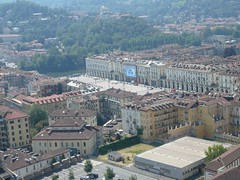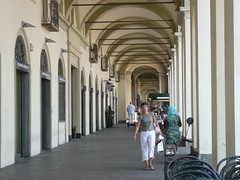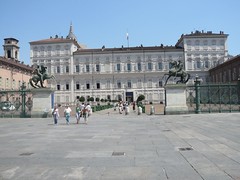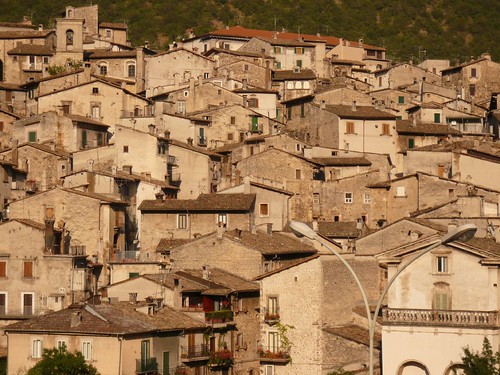
“There isn’t anything to say about Venice (including this sentence) that hasn’t already been said.” This is a quote in a book about Venice by John Berendt, The City of Falling Angles, which is quoting two other people about Venice. I quote not to provide you, dear reader, with some prescient insight into Italy or Venice; at this time, I’m pretty convinced that our experience has been deeply personal, yet not entirely uncommon. No, I quote the quote that quoted the quip as a way of bringing up the subject of what I’ve been reading this summer.
A recent trip to Venice inspired a mass market paperback purchase of Berendt’s follow up to Midnight in the Garden of Good and Evil. Rachel had read it a year or so ago and proclaimed it to be “a good mix of history and gossip” and good summer reading. We had fallen under the spell of Vernice while we were there and so it was a fun read. Sometimes too much gossip and not enough history, but the parts that I was interested in I found myself totally engrossed.
For other reading on Italia I picked up La Bella Figura, by Beppi Sevegnini. The subtitle of this book is “A field Guide to Understanding the Italian Mind.” I had heard him on NPR a few months ago and he had some funny cultural insights. He’s a newspaper columnist for one of the larger papers here in Italy. He’s quite funny, very readable, and not entirely trustworthy. There’s probably a bit of truth to all of his observations, but not much to back them up with. Yet, I see what he’s talking about occasionally when I’m out walking the town. Still, another good summer read. Rachel and I are both reading this one simultaneously so it’s a hot commodity around the house.
While googling La Bella Figura, I stumbled across this:"The Italians", by Luigi Barzini. Looks similar and interesting, while maybe not as cheeky.
One more Italian thing before I move on. We are living at the corner of Via Canonica and Via del Inferno in the heart of Bologna's old Jewish ghetto which has now been enveloped by the University district. Dante attended the University of Bologna and even references the two towers around the corner from our flat in Canto ______ of the Divine Comedy. On the little Piazetta around another corner (the neighborhood is truly a labyrinth) there was this little street theater production that happened for about a week straight. The first night I stopped to watch, but it being in Italian I understood very little. What I did follow was that they guy who was supposedly leading a tour of the ghetto was interrupted by a "passer-by" who just happens to be Alighieri Dante. I figured that out by his 12th Century hat and shoes. For the next few nights I would pass the street theater but turn the corner and head home. I got into the habit of running into Dante waiting in the wings for his cue. I got in the habit of greeting him by name, or calling him Maestro. Considering how old this neighborhood is, I appreciated running into ole Dante night after night. It was cool.
So that got me thinking about The Divine Comedy, which I read many years ago and have occasion to talk to students about every now and then. I don't teach it but sometimes students choose to read it independently and when they do, they really want to talk about it. I picked the Penguin Classic edition with a new translation by Mark Musa, who incidentally is a Professor of French and Italian at Indiana University. I chose it simply because it had the least punctuation of any translation I had to choose from. The Library Journal described his translation like this: "Musa's translation is in fluent, colloquial verse that aims for the speed and rhythm of the original though not the form." It's the most readable version I've ever seen because it doesn't get bogged down with a lot of punctuation acrobatics. Stylistically, and in subject matter, it also reminds me of one of the best books that I've read this summer and possibly in years: Cormack McCarthy's The Road.
While The Divine Comedy imagines a poet's tour of hell and the path to salvation, The Road is a poetic description of a post-apocalyptic world full of horrors worthy of Dante's Inferno. Bleak as the world of The Road is, the idea of redemption is still alive in the form of promises. I have been a fan of McCarthy for years, count Blood Meridian as one of my favorite novels ever, and have been a little disappointed with some of his recent work. The Road is possibly as good as Blood Meridian. Astoundingly, it's an Oprah book. She even scored the only live televised interview with the famously reclusive author. You have to register with Oprah's book club to watch, but there are worst things in life. The Road is an surprising choice for Oprah not because he is an obscure, dense writer, but for those of us who know what McCarthy is capable of describing, it's hard to imagine the subject matter being palatable for the millions of Oprah viewers who are eagerly awaiting instructions. Or as the color commentary guys noted in the Tournament of books this year:
Kevin Guilfoile: Has anyone built a career the way McCarthy has built his? That respect is earned, man. Bleak and violent novel after novel after novel.
John Warner:It seems like only a matter of time until we see a Saturday Night Live skit with a baby being roasted over a fire.
If anyone followed the Morning News Tournament of Books this year it came down to The Road vs. Absurbistan, by Gary Shteyngart. The Tournament happens in March, of course, and offers ficition in a sort of bracket tournament of awesomeness. The winner is awarded the coveted "Rooster" award, named after David Sedaris' brother. I'm about two-thirds of the way through Absurdistan right now, and while I'm really enjoying it, it took a while to get going. It's a fun read considering all the culture mashup things I've seen this summer. (Currently I'm writing this in on a public terminal at an internet point and long distance phone place where the dominant language is not Italian, it's Arabic.)
Another great novel that I read recently was Cloud Atlas, by David Mitchell. I read Black Swan Green, his most recent book, as a possible classroom adoption for the school. I loved the book but the general consensus was that some of the language was a little too much for the community in which I teach. Feh. It was a great coming of age story and I was amped to read more. Cloud Atlas is like 6 novels all in one. David Mitchell is a talented writer who is able to nail voice almost better than anyone else writing today. Jason, the narrator of Black Swan Green, was one of the most authentic teenage voices I've read in a long time, and on top of that, it isn't even an older teenager: he's 13 for the entire length of the book. Cloud Atlas has 6 different voices and he nails each one. I highly recommend both of these books.
Finally, I plowed through Alan Furst's The Foreign Correspondent as soon as we got here. I bought it on impulse at the airport on the way out of Portland. I had been meaning to give Furst a go, but never had the time. It was a spy novel, or was it a novel about a journalist? Such a fine line when everyone is telling you secrets. Set in the Italian ex-pat community of Paris after the rise of the Fascists when Europe is poised to explode into another world war. It's thrilling, evocative, and a good book to start the trip.
I think that's it. As you could see from the photo at the top of the page, Rachel found an English version of Harry Potter and the Deathly Hallows. I think that she would give it two-thumbs up. With some limited internet connectivity in our flat and a satellite dish that is scheduled for repair in September, we've both had a lot of time to read. It's been really nice. As the good people in my book club can attest, between work and grad school, my plate gets full of stuff that I have to plow through and don't get as much time to read for pleasure. We've been lucky because the English language bookstore is just around the corner (another corner) from our apartment. We brought a bunch of things with us but haven't had to rely on them entirely. Consequently, I think I'm going to be bringing home with me a very well travelled and thoroughly unread copy of Jonathan Franzen's The Corrections. If I don't read that book after humping it across Italy, I'm never going to read it.








